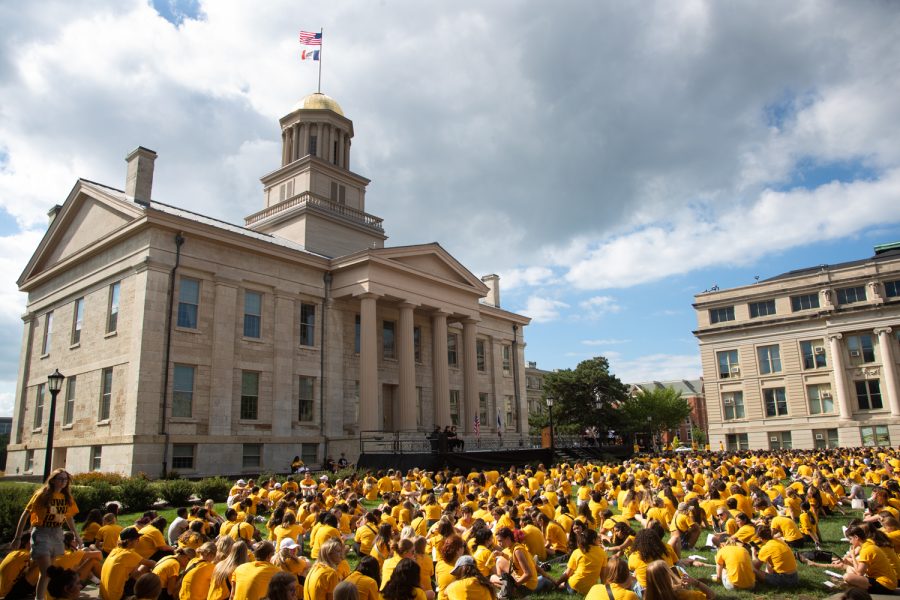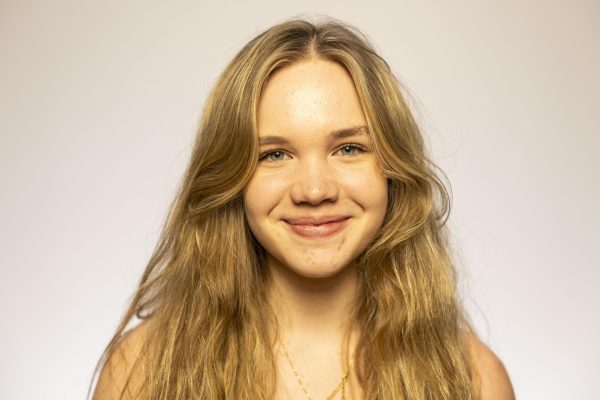UI first-year students left behind in federal loan forgiveness program
Students who took out loans after the June 2022 deadline are deemed ineligible for up to $20,000 of relief.
First-year students wait to listen to speeches during convocation at the University of Iowa’s Pentacrest on Sunday, Aug. 21, 2022.
January 31, 2023
When the Biden Administration announced its student loan forgiveness program, many University of Iowa students and graduates were excited at the possibility of having up to $20,000 of their loans forgiven.
However, some UI students in the class of 2026 feel they have been left behind. The student loan forgiveness program was initiated as a response to the COVID-19 pandemic and only applies to people who borrowed loans before June 30, 2022. Federal student loans for first-year college students began in August 2022.
“I thought I was pretty self-aware in the beginning of the financial aid process,” Morgan Schropp, a UI first-year student, said. “I started by looking for scholarships and such, and after a while, I kind of got the impression that everything would be automatic. Easy.”
After Schropp got her first U-Bill, she said she was shocked to see there was no financial relief from the university after all of the scholarships she applied for.
“I am so happy for those above me that have the possibility of loan forgiveness, like my sister, but I can’t say it wouldn’t be nice to have the same opportunity,” she said.
Schropp said despite having a high GPA in high school and academic offers from other schools, she chose the UI because she believed it was inexpensive. Now, she said she is relying on her FAFSA loans which will add up to roughly $22,000 at the end of her four years.
“I’ve been in contact with financial aid and ended up in touch with admissions as well to look into more opportunities, but the experience has not been the greatest,” she said.
The student loan forgiveness program was shut down in November 2022 by a federal district court judge based in Fort Worth, Texas, one month after a temporary block by the U.S. 8th Circuit Appellate Court brought by six states, including Iowa. The U.S. Supreme Court will hear oral arguments for the cases next month.
According to new data from the U.S. Department of Education released Jan. 27, 264,000 Iowans have applied for the program, and 169,000 Iowans had their fully-approved applications sent to loan servicers for discharge.
Kelsey Ryder, UI associate director of advising, financial literacy, and outreach at the Office of Student Financial Aid, wrote in an email to The Daily Iowan that her department is there to help students who need help understanding student loans and repayment plans.
“We offer financial literacy services where we can dig into topics like budgeting and tracking spending to help students find ways to manage their money in college, which may help students borrow less in loans,” she wrote.
RELATED: Federal judge strikes down Biden’s student-debt relief program
Ryder added that she wanted new loan borrowers to be aware that the Biden debt cancellation program created a new income-based repayment option to help future borrowers, which will be reviewed by the U.S. Supreme Court this spring.
Stephanie Cook, a UI third-year student, said she expects to spend the rest of her life in debt.
“I have too many loans, even with my two scholarships,” she said. “And even though my dad has a good job, FAFSA doesn’t account for the fact that I will be paying off every dollar myself.”
Cook said the possibility of having $10,000 in loans forgiven would be life changing.
“It’s so unfair to think of the students that just missed the deadline,” she said. “If I had taken a gap year or time off, and I missed qualifying, I would have beat myself up.”
Zoe Bergman, a second-year UI student, said the main problem with financial aid is how confusing and misleading it can be for students.
“With the way [loan forgiveness] was talked about, it sounded like they’re going to give loan forgiveness to all college students, or at least that’s what I thought,” she said. “I had no idea I was walking next to some classmates that are eligible for $20,000 of relief and others who are eligible for zero.”















